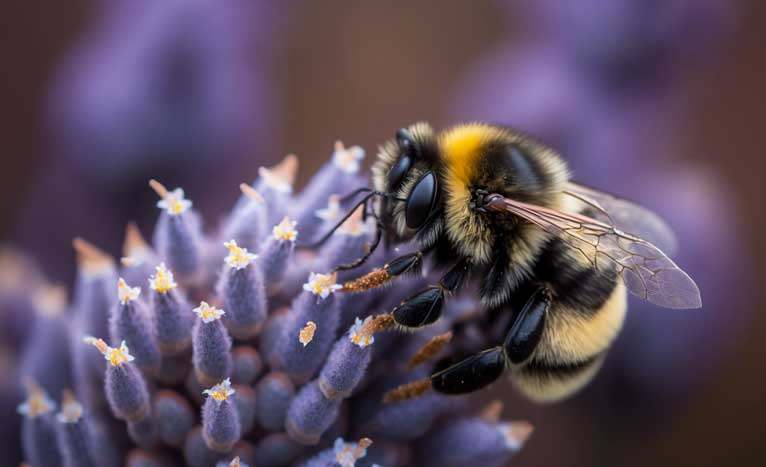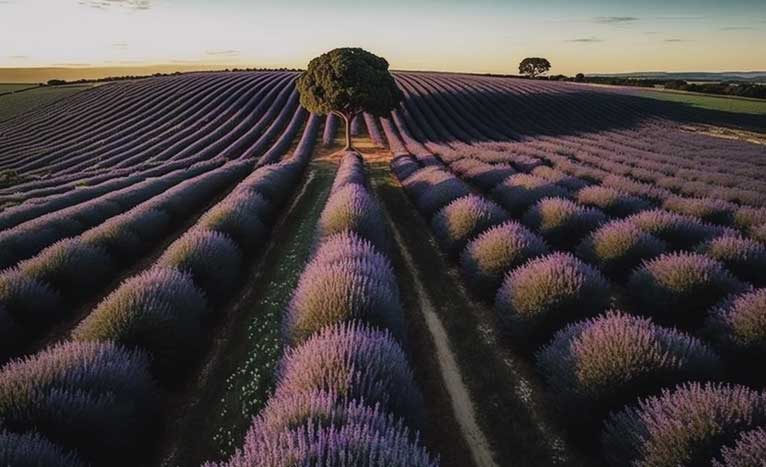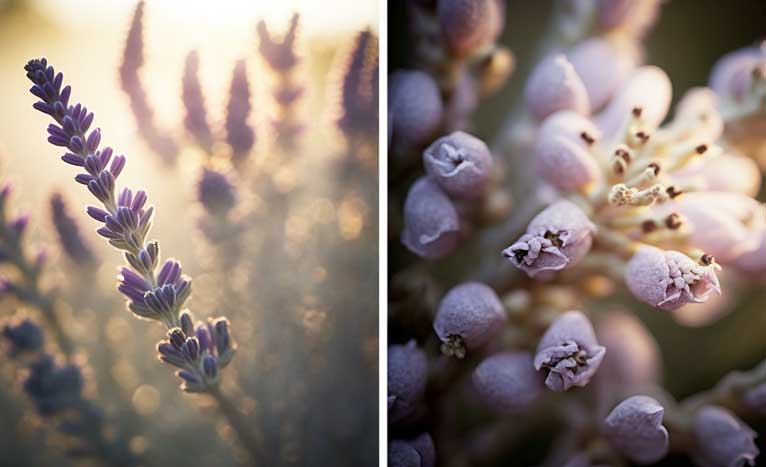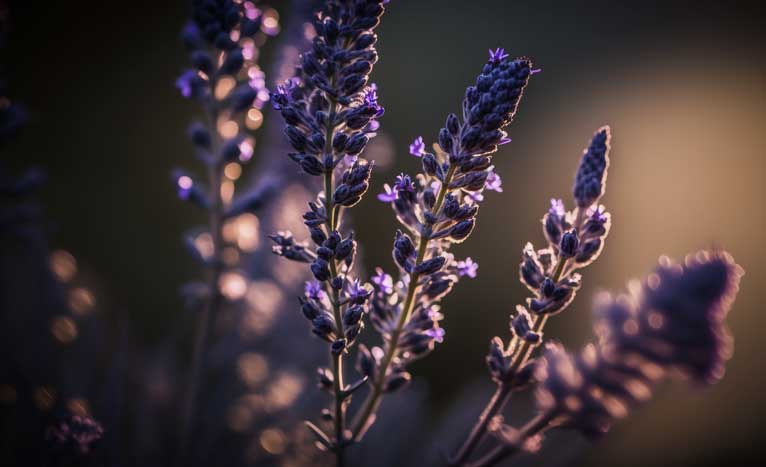Are you looking for an easy and enjoyable way to add some color and fragrance to your garden? If so, growing lavender might be just what you need. Lavender is a beautiful and fragrant herb that is easy to grow, and it offers many benefits for both your garden and your well-being. In this blog we will explore how to grow lavender, from choosing the right variety to harvesting and using the plant.
I love lavender! Lavender is one of my favorite plants in my garden. In fact, I even planted lavender in my city yard because I loved it so much. Not only do I love lavender, but so do honeybees. Lavender is a wonderful flower to grow for honeybees to gather pollen from. Lavender smells delicious and the aroma will toss and turn around your yard with a light breeze.

The Benefits of Growing Lavender
Before we dive into the specifics of how to grow lavender, let's take a moment to appreciate the many benefits this plant has to offer.
Lavender is a beautiful plant with vibrant purple flowers that add a pop of color to any garden.
The plant's fragrant scent is soothing and calming, making it a popular ingredient in aromatherapy products. I personally use lavender essential oil in DIY tallow lotion. You can also put a drop of lavender oil on your skin for a calming effect.
Lavender has a long history of medicinal use, from treating anxiety and insomnia to relieving pain and inflammation.
The plant is easy to grow and requires minimal care, making it a great choice for gardeners of all skill levels.
Now that we've covered some of the benefits of growing lavender, let's dive into the specifics of how to grow this delightful herb.
Choosing the Right Variety of Lavender
There are many different varieties of lavender available, each with its own unique characteristics. When choosing a variety of lavender to grow, consider the following factors:
Climate: Some varieties of lavender are more cold-tolerant than others, so choose a variety that is suited to your climate.
Growth habit: Some varieties of lavender are compact and bushy, while others are tall and leggy. Choose a variety that fits the space you have available. Personally, I have had both and I prefer to have the compact and bushy style of lavender. I noticed that my bees preferred that as well compared to the more leggy bush.
Flower color and fragrance: Lavender comes in a range of colors, from pale pink to deep purple, and each variety has its own unique scent.
Some popular varieties of lavender include English lavender (Lavandula angustifolia), French lavender (Lavandula stoechas), and Spanish lavender (Lavandula dentata).

Once you've chosen a variety of lavender to grow, it's time to get planting. Follow these steps to ensure your lavender gets off to a good start:
- Choose a sunny, well-drained location: Lavender needs plenty of sun to thrive, so choose a location that gets at least 6 hours of direct sunlight per day. The soil should be well-drained, as lavender doesn't like to sit in wet soil.
- Prepare the soil: Lavender prefers a slightly alkaline soil with a pH between 6.5 and 7.5. If your soil is too acidic, add lime to raise the pH. If it's too alkaline, add sulfur to lower the pH. Mix in some compost or other organic matter to improve soil structure and fertility.
- Plant the lavender: Dig a hole that is slightly larger than the root ball of the plant. Gently remove the plant from its container and loosen the roots. Place the plant in the hole, making sure the top of the root ball is level with the soil surface. Backfill the hole with soil and gently tamp it down. Water the plant well.
How to Grow Lavender
Lavender is a low-maintenance plant that requires minimal care. Follow these tips to ensure your lavender thrives:
Watering: Lavender doesn't like to be over-watered, so only water when the soil feels dry to the touch. Water deeply, but infrequently, to encourage deep root growth.
Fertilizing: Lavender doesn't need much fertilizer, but a light application of balanced fertilizer in early spring can help promote growth.
Pruning: Lavender benefits from annual pruning to promote bushy growth and prevent woody stems. Prune in late summer, after the plant has finished blooming, by cutting back the top third of the plant.
Mulching: A layer of mulch around the base of the plant can help retain moisture and suppress weeds.
Pests and diseases: Lavender is generally resistant to pests and diseases, but keep an eye out for spider mites, aphids, and root rot.
With these simple care tips, your lavender should thrive and reward you with beautiful flowers and a lovely fragrance.

Harvesting Lavender
When the lavender blooms, you can start harvesting the flowers. Here's how to do it:
- Wait until the flowers have fully opened and the buds have begun to swell.
- Cut the flower stems just above the leaves, using sharp, clean scissors or shears.
- Gather the cut stems into small bunches and tie them with string.
- Hang the bunches upside down in a dry, well-ventilated place. The flowers will dry in a few days.
Once the flowers are dry, you can use them to make sachets, potpourri, or lavender oil.
FAQs about Growing Lavender
Can lavender grow in pots?
Yes, lavender can grow in pots as long as the pot is large enough and the soil is well-draining. Choose a compact variety of lavender and use a potting mix that includes perlite or sand to improve drainage.
How often should I water my lavender plant?
Water your lavender plant when the soil feels dry to the touch. Depending on the climate and soil conditions, this could be once a week or once every two weeks.
What pests and diseases should I watch out for?
Lavender is generally resistant to pests and diseases, but watch out for spider mites, aphids, and root rot. If you notice any problems, treat them promptly with an organic insecticide or fungicide.
How long does lavender take to grow from seed?
Lavender can take several weeks to germinate from seed, and it may take 2-3 years for the plant to reach full size and bloom. For faster results, start with a young plant or take cuttings from an established plant. The easiest way to get a young plant is to go to your local nursery. They may even have varieties of lavender that are more suitable for the climate and area that you are in. Nurseries near to me are my best source for local gardening knowledge besides other gardeners.
Can I prune my lavender plant in the spring?
It's best to wait until late summer to prune your lavender plant, after it has finished blooming. Pruning in the spring can damage new growth and reduce the plant's overall vigor.
How can I use lavender in cooking?
Lavender can be used in a variety of sweet and savory dishes, from lavender lemonade to lavender-infused honey. Use fresh or dried flowers sparingly, as they can be overpowering.
Growing lavender is a rewarding and enjoyable experience that can add beauty and fragrance to your garden, as well as provide a range of benefits for your well-being. With these simple tips, you can successfully grow lavender and enjoy its many uses. So go ahead and plant some lavender today! I don’t regret planting lavender in my garden. Smelling its sweet aroma whenever a breeze wafts through the garden is one of my favorite parts of being in the garden because it reminds me of my mom! Cheers to happy homestead memories.

